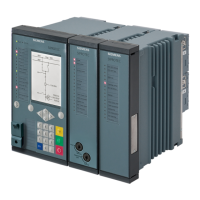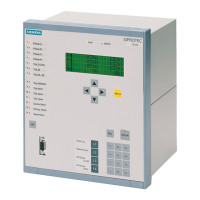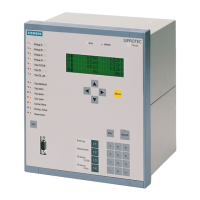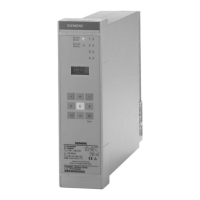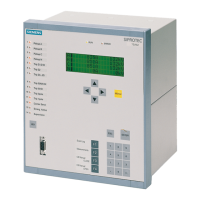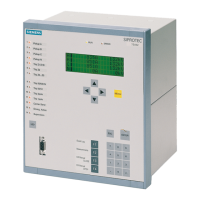Do you have a question about the Siemens SIPROTEC 7UM62 and is the answer not in the manual?
Describes the time-overcurrent protection as backup, its I> stage, and the undervoltage seal-in mechanism.
Explains the high-current stage I>> and its direction detection capability for fault identification.
Details the inverse-time overcurrent protection for short circuits, including pickup, tripping, and undervoltage detection.
Describes the thermal overload protection which prevents stator winding overheating using a single-body thermal model.
Explains the detection of asymmetrical loads in three-phase machines, including warning stages and thermal characteristics.
Covers the short-circuit protection function operating below 10 Hz, crucial for generators during startup.
Explains the differential protection for generators, motors, and transformers, including basic principles and stabilization.
Details the earth current differential protection for detecting earth faults in low-ohmic or solid starpoint earthed systems.
Describes the protection against asynchronous operation due to faulty excitation or regulation.
Explains the protection for turbo-generator units against motoring energy from the network.
Covers active power supervision, monitoring whether active power falls below a value or exceeds another.
Details machine impedance protection for selective time-graded tripping for short-circuits.
Explains the out-of-step protection based on impedance measurement and evaluation of the complex impedance vector trajectory.
Describes the function that detects voltage dips on electrical machines and prevents inadmissible operating states.
Covers overvoltage protection to safeguard electrical machines and plant components from inadmissible voltage increases.
Details the function that detects abnormally high and low frequencies in the generator.
Explains overexcitation protection for generators and transformers to detect inadmissibly high induction.
Describes inverse undervoltage protection for consumers, preventing inadmissible operating conditions.
Covers the protection that quickly detects frequency changes, allowing prompt response to dips or rises.
Explains the function to identify voltage vector jumps, primarily used for network decoupling.
Details earth fault detection in stator windings, covering busbar and unit connections.
Describes sensitive earth current protection for isolated or high-impedance earthed starpoints.
Explains 100% stator earth fault protection using 3rd harmonic for enhanced detection.
Details 100% stator earth fault protection for generators using a 20 Hz injected voltage.
Covers sensitive earth fault protection using IEE-B input for greater flexibility, including shaft current protection.
Describes interturn fault protection for detecting faults between turns within a generator winding.
Provides general installation safety regulations and details on device connection options.
Covers the procedures for commissioning the device, including test modes and checks.
Provides setting ranges, increments, pickup characteristics, times, dropout ratios, tolerances, and influencing variables.
Details setting ranges, increments, trip time curves, pickup times, dropout ratios, tolerances, and influencing variables.
Provides a comprehensive list of all device settings, parameters, and their default values.
| Manufacturer | Siemens |
|---|---|
| Model | SIPROTEC 7UM62 |
| Rated frequency (fn) | 50/60 Hz |
| Current transformer inputs | 3 |
| Automatic reclosing | Yes |
| Device Type | Protection Device |
| Protection Functions | Overcurrent, Overvoltage, Undervoltage, Frequency |
| Communication Interfaces | Ethernet |
| Communication Protocols | IEC 61850, Modbus, DNP3 |
| Voltage Supply | 24-250 V DC/AC |
| Input Voltage | 24 to 250 V DC or AC |
| Frequency Range | 45 Hz to 65 Hz |
| Binary inputs | 8 |
| Operating Temperature | -25°C to +70°C |

